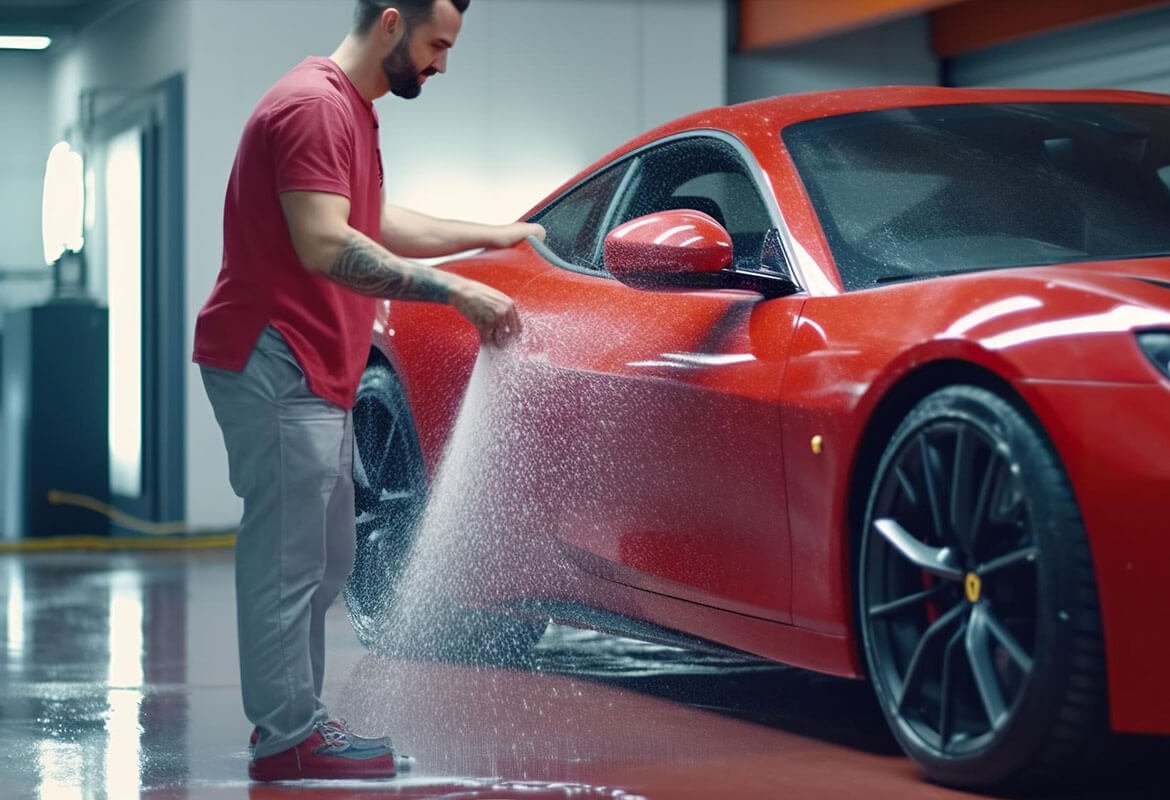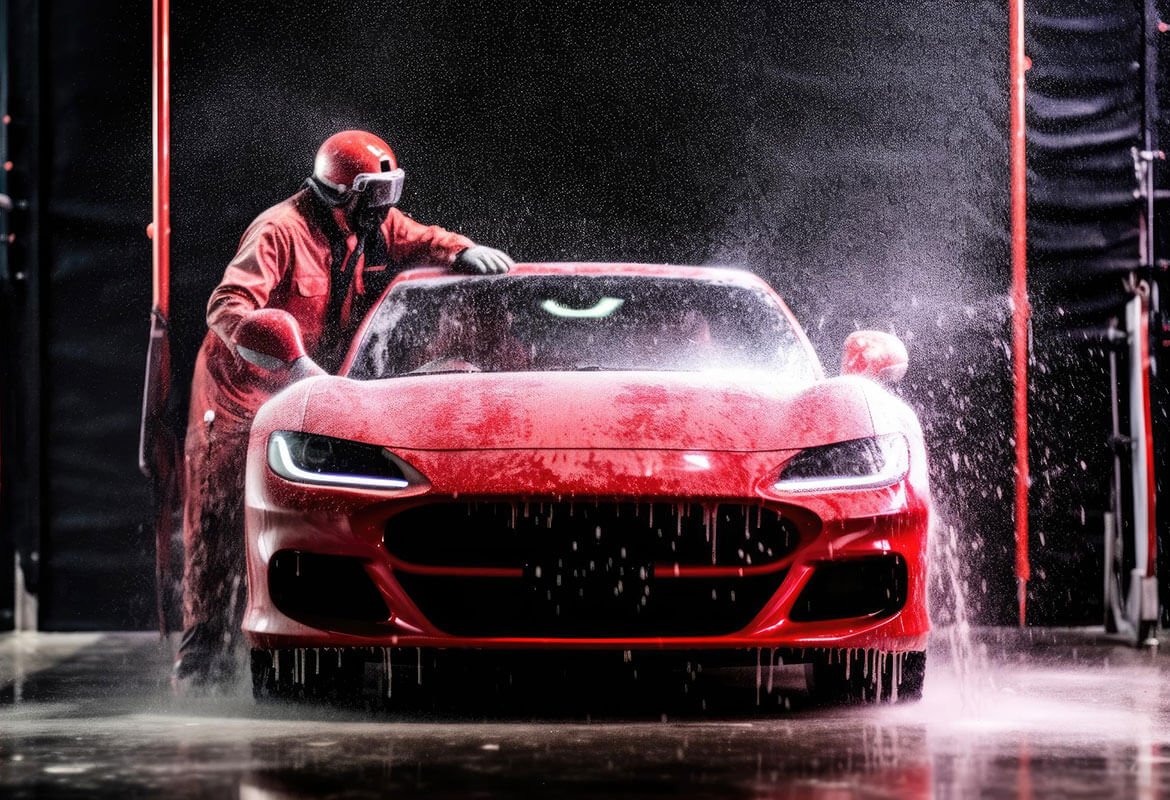Everything You Need to Know About Car Paint Protection Film (PPF): The Ultimate Guide
Introduction to Car Paint Protection Film (PPF)
Car paint protection film (PPF), also known as clear bra or car protection film, is a transparent, high-performance polyurethane layer designed to shield your vehicle’s paint from damage. Whether you’re driving on highways prone to stone chips or parking in crowded urban areas, PPF acts as an invisible barrier, preserving your car’s pristine appearance. This guide explores what PPF is, its benefits, types, installation process, and maintenance tips, helping you decide if it’s worth the investment for your vehicle.
What Is PPF and How Does It Work?
PPF is made from thermoplastic polyurethane (TPU), a durable, flexible material that adheres to a vehicle’s exterior surfaces. Unlike vinyl wraps, which focus on aesthetics, PPF prioritizes protection. It’s typically 6–8 mils thick, making it robust enough to absorb impacts from road debris, gravel, and minor scratches. Many modern PPFs, such as those from XPEL or 3M, feature self-healing properties, where minor scratches disappear when exposed to heat, like sunlight or warm water. The film also has hydrophobic properties, repelling water, oil, and dirt, making cleaning easier.
PPF can be applied to high-impact areas like the hood, bumper, fenders, mirrors, and headlights or used for full-vehicle coverage. It protects against:
- Stone chips and road debris: Absorbs impacts from gravel and rocks.
- Scratches and scuffs: Shields paint from minor abrasions.
- UV damage: Prevents fading and oxidation from sun exposure.
- Environmental contaminants: Guards against bird droppings, tree sap, and bug splatter.
Benefits of Car Paint Protection Film
Investing in PPF offers numerous advantages for car owners, especially those who want to maintain their vehicle’s resale value and appearance. Here are the key benefits:
1. Superior Paint Protection
PPF acts as a sacrificial layer, taking the brunt of damage that would otherwise harm your car’s paint. For example, a rock hitting your hood might chip the paint, but with PPF, the film absorbs the impact, leaving the underlying paint intact.
2. Self-Healing Technology
High-quality PPFs, like STEK’s DYNOshield or Avery Dennison’s Supreme PPF, have self-healing topcoats. Minor scratches and swirl marks vanish when the film is heated, keeping your car looking flawless.
3. Hydrophobic Properties
PPF’s water-repellent surface makes it easier to clean. Water, oil, and dirt bead up and slide off, reducing the need for frequent washing or waxing.
4. UV Resistance
PPF blocks harmful UV rays, preventing paint fading and oxidation. This is crucial for maintaining vibrant colors, especially on luxury or custom-painted vehicles.
5. Enhanced Aesthetics
Glossy PPF enhances the shine of your car’s paint, giving it a “just-waxed” look. Matte or colored PPF options can also add a unique aesthetic while protecting the surface.
6. Increased Resale Value
A well-maintained exterior boosts a car’s resale value. PPF keeps the paint in showroom condition, making your vehicle more appealing to buyers.
Types of PPF: Glossy, Matte, and Colored
PPF comes in various finishes to suit different preferences:
- Glossy PPF: Enhances paint shine, ideal for those who want a sleek, polished look.
- Matte PPF: Offers a satin finish, perfect for matte-painted vehicles or a subtle aesthetic.
- Colored PPF: Combines protection with customization, available in shades like black or metallic.
Brands like Vinyl Frog and TeckWrap offer PPF in various thicknesses (6.5–9.5 mils) and roll sizes (5ft x 3.28ft to 49.21ft), catering to both partial and full-vehicle applications.
Cost of PPF: What to Expect
The cost of PPF varies based on coverage, vehicle size, and installation quality. According to industry sources, here’s a breakdown:
- Partial Coverage (e.g., bumper, hood, mirrors): $300–$2000.
- Full Front Package (hood, fenders, bumper, mirrors): $2000–$4000.
- Full Vehicle Wrap: $5000–$8000+ for sedans or SUVs.
Factors affecting cost include:
- Vehicle Size: Larger vehicles like SUVs require more material, increasing costs.
- Installer Expertise: Certified professionals charge more but ensure seamless application.
- PPF Brand: Premium brands like XPEL or Suntek cost more than generic films.
- Additional Prep: Older vehicles may need paint correction or polishing, adding to expenses.
While DIY PPF kits are available for $20–$60 per roll, professional installation is recommended for optimal results, as it requires precision and specialized tools like plotters and squeegees.
PPF vs. Vinyl Wraps vs. Ceramic Coatings
PPF is often confused with vinyl wraps and ceramic coatings, but each serves a distinct purpose:
- PPF: Thick, protective, self-healing, and transparent; ideal for shielding paint.
- Vinyl Wraps: Thinner, colorful, and customizable; focus on aesthetics over protection.
- Ceramic Coatings: Liquid coatings that add gloss and hydrophobicity but offer less impact resistance.
Combining PPF with a ceramic coating can enhance gloss and hydrophobicity, providing the ultimate protection package.
Installation Process: What to Expect
Professional PPF installation involves several steps:
- Surface Preparation: The vehicle is washed, decontaminated, and polished to remove imperfections.
- Cutting the Film: Installers use plotters to pre-cut PPF for a custom fit, minimizing waste.
- Wet Application: The film is applied using a soap-and-water solution or installation gel, ensuring smooth adhesion.
- Edge Wrapping: High-quality installers wrap edges to eliminate visible seams.
- Final Inspection: Air bubbles are smoothed out, and the film is checked for alignment.
DIY installation is possible but challenging, requiring a dust-free environment, proper tools, and patience to avoid bubbles or misalignment.
Maintenance Tips for PPF
To maximize PPF longevity (5–10 years), follow these tips:
- Washing: Use the two-bucket method with a mild car shampoo to avoid scratches.
- Avoid Harsh Chemicals: Use PPF-safe cleaners to prevent damage to the topcoat.
- Regular Inspections: Check for lifting edges or contaminants and address them promptly.
- Waxing: Apply PPF-compatible wax to enhance gloss.
- Heat for Self-Healing: Park in sunlight or use warm water to activate self-healing properties.
Is PPF Worth It?
PPF is a worthwhile investment for those who prioritize their vehicle’s appearance and resale value. It’s particularly beneficial for:
- Luxury or high-value cars (e.g., priced above $40,000).
- Frequent highway drivers exposed to road debris.
- Off-road enthusiasts needing protection from branches and rocks.
- Owners planning to keep their vehicle for 4+ years.
While the upfront cost is high, PPF saves money on paint repairs and maintains your car’s showroom shine.
Where to Find PPF Near You
To find a reputable PPF installer, search for “car PPF near me” and look for certified shops like Lahore Auto offering brands like XPEL, Suntek, or Stek.
Conclusion
Car paint protection film is a game-changer for vehicle owners seeking long-term paint protection. With its self-healing, hydrophobic, and UV-resistant properties, PPF keeps your car looking new while safeguarding it from daily wear and tear. Whether you opt for partial coverage or a full wrap, choosing a high-quality film and professional installation ensures the best results. Protect your investment today with PPF and enjoy a flawless ride for years to come.







